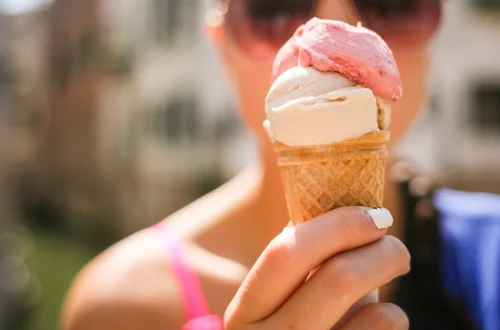
Effective Deer Proof Bird Feeders to Keep Your Garden Safe
Creating a vibrant garden that attracts a variety of birds can be a rewarding experience for any nature lover. However, as enchanting as it is to watch birds flit from feeder to feeder, there are often unwelcome visitors in the form of deer who can wreak havoc on your carefully curated outdoor space. These gentle giants are known for their insatiable appetites and can quickly decimate bird seed supplies, not to mention munch on your beloved plants.
Deer are not only drawn to bird feeders but also to the flowers and shrubs that populate gardens, leading to a frustrating struggle for gardeners trying to maintain a beautiful landscape. This challenge raises an important question: how can you protect your bird feeders from these unwelcome herbivores? The solution lies in using effective deer-proof bird feeders that can withstand the curious nibbling of deer while still providing a safe haven for your feathered friends.
In this article, we will explore various strategies and types of feeders designed to keep deer at bay while ensuring that your garden remains a sanctuary for birds. From understanding the behavior of deer to selecting the right feeder, we will cover everything you need to know to create a harmonious outdoor environment.
Understanding Deer Behavior and Their Impact on Gardens
To effectively protect your garden from deer, it’s essential to understand their behavior and feeding habits. Deer are naturally drawn to areas where food is abundant, and gardens often provide a buffet of delicious options. They are particularly attracted to sweet-smelling flowers, tender young shoots, and, of course, the birdseed that you may have hung up for your avian visitors.
Deer typically feed in the early morning and late evening, taking advantage of lower light conditions to avoid predators. This means that if you’re an early riser or enjoy gardening in the evening, you may encounter them more frequently. Understanding their feeding times can help you plan your bird feeding schedule and the placement of your feeders.
Additionally, it’s important to note that deer are creatures of habit; once they discover a reliable food source, they tend to return to the same location repeatedly. This is why it’s crucial to implement preventative measures as soon as you notice their presence. If deer become accustomed to dining in your garden, they may also begin to munch on your plants, leading to significant damage.
Using deer-proof bird feeders can help mitigate these risks. These feeders are designed with features that deter deer while remaining accessible to smaller birds. By understanding how deer behave and what attracts them, you can make informed choices about your feeders and garden layout, ensuring that your efforts to attract birds do not inadvertently invite these unwanted guests.
Choosing the Right Deer-Proof Bird Feeder
When it comes to selecting a deer-proof bird feeder, several factors should be considered. The first is the design of the feeder itself. Look for feeders that are elevated or have features that make it difficult for deer to reach the food. For instance, platform feeders mounted on tall poles can keep the seed out of reach of deer while still being accessible to smaller birds.
Another effective design aspect is the use of mesh or wire cages around the feeders. These cages can allow birds to enter while keeping larger animals like deer at bay. Look for feeders with small openings that only birds can fit through, ensuring that your seed is protected from hungry deer.
Additionally, consider the materials used in the feeder’s construction. Durable materials such as metal or high-quality plastic are not only weather-resistant but also more difficult for deer to damage. Some feeders even come with a locking mechanism to prevent larger animals from accessing the seed compartment.
Placement is equally important when it comes to keeping deer away from your feeders. Positioning your feeders near natural barriers like thorny bushes or dense shrubs can deter deer from venturing too close. If your garden is large enough, consider creating a designated bird feeding area that is enclosed, making it less inviting for deer.
Finally, take the time to research brands and products that are specifically marketed as deer-proof. Reviews and testimonials can offer insights into how effective a feeder may be in keeping deer at bay while still attracting a variety of birds.
Additional Strategies to Deter Deer from Your Garden
In addition to using deer-proof bird feeders, there are several other strategies you can employ to keep deer away from your garden. One effective method is to use natural deterrents. Scents that are unappealing to deer, such as garlic, peppermint, and certain commercial deer repellents, can be applied around your garden to discourage them from approaching.
Another strategy is to create physical barriers. Fencing is the most direct method, but it needs to be high enough and designed properly to be effective. A fence should ideally be at least eight feet tall since deer are excellent jumpers. You can also consider using mesh or netting to protect specific areas such as flower beds or vegetable patches.
Incorporating plants that deer tend to avoid can also help. Consider adding herbs like rosemary, sage, and lavender to your garden. These plants not only enhance the beauty of your landscape but also serve as natural deterrents due to their strong scents.
Finally, consider the use of motion-activated devices. Sprinklers or lights that activate when they detect movement can startle deer and keep them away from your garden. These devices can be particularly effective in combination with other deterrents, creating a multi-faceted approach to keeping deer at bay.
By employing these additional strategies alongside your deer-proof bird feeders, you can create a more effective defense against these hungry intruders, ensuring that your garden remains a safe haven for birds.
Maintaining Your Bird Feeders for Long-Term Success
Once you’ve successfully installed deer-proof bird feeders in your garden, it’s essential to maintain them properly to ensure their longevity and effectiveness. Regular cleaning is crucial; bird feeders can accumulate mold, bacteria, and leftover seed, which can be harmful to both birds and the overall health of your garden.
Clean your feeders every few weeks, using a mild soap solution to scrub away any debris. Rinse thoroughly with water to remove any soap residue, and allow the feeder to dry completely before refilling it with fresh seed. This practice not only keeps your feeders in top condition but also attracts more birds, as they prefer clean feeding environments.
Additionally, regularly check the feeder for any signs of damage or wear. If any parts are broken or if the feeder is starting to show signs of rust, repair or replace it promptly. A damaged feeder may not only deter birds but can also make it easier for deer to access the seed.
Another key aspect of maintenance is monitoring the seed supply. Ensure that your feeders are always stocked with fresh seed, as an empty feeder can lead to birds seeking food elsewhere. This is especially important during winter months when natural food sources are scarce.
Lastly, keep an eye on the surrounding area. If you notice that deer are still frequenting your garden despite your efforts, it may be time to reassess your strategies. Consider incorporating more deterrents or adjusting the placement of your feeders to enhance their effectiveness.
By maintaining your deer-proof bird feeders and surrounding garden areas, you can create a thriving environment for both birds and plants, allowing you to enjoy the beauty of nature without the frustration of deer interference.




